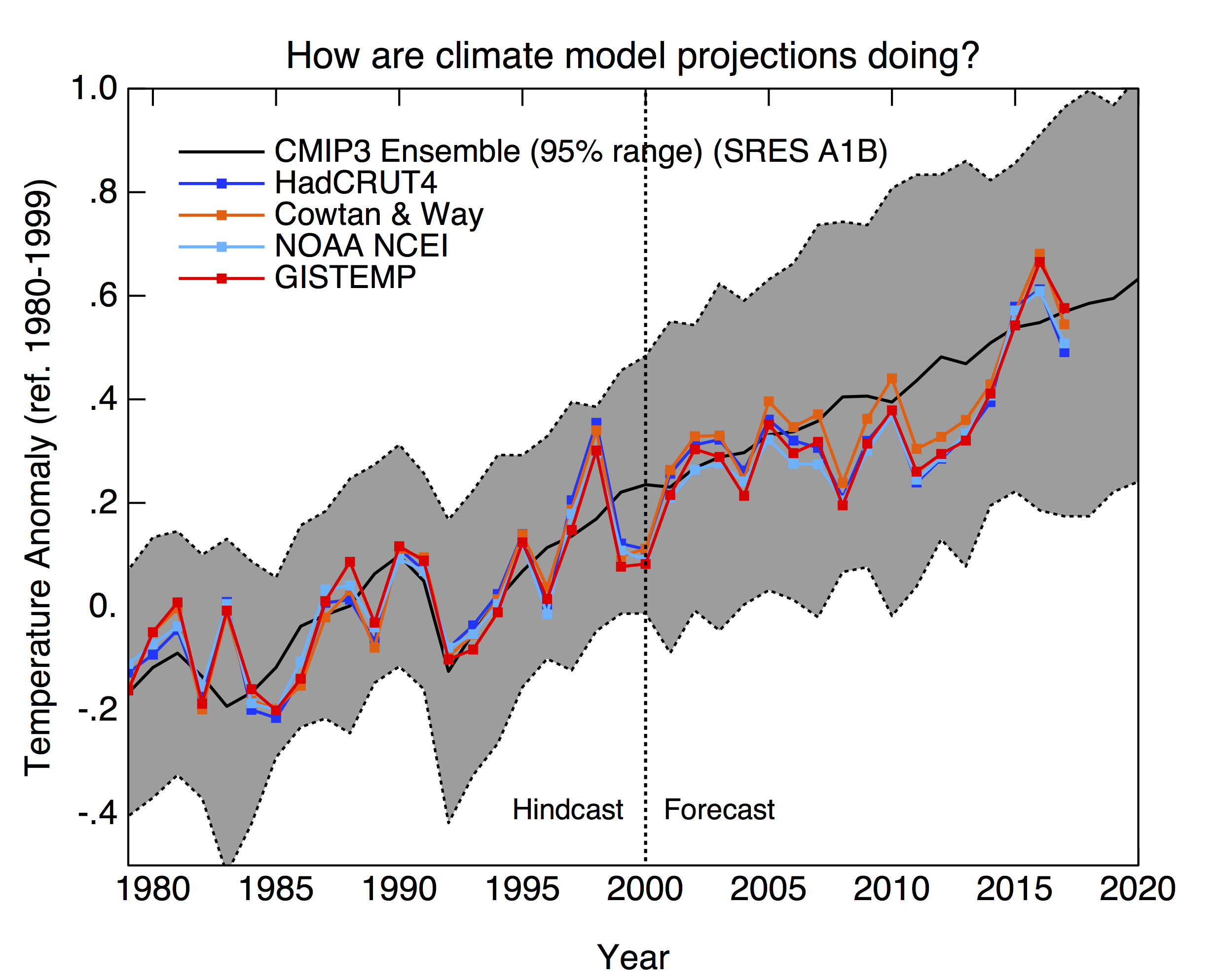Here are clips from just 3 published papers speaking to the fact that climate models are useless. There are literally dozens of papers and the number keeps growing.
May common model biases reduce CMIP5’s ability to simulate the recent Pacific La Niña-like cooling?
“
Over the recent three decades sea surface temperate (SST) in the eastern equatorial Pacific has decreased, which helps reduce the rate of global warming. However,
most CMIP5 model simulations with historical radiative forcing do not reproduce this Pacific La Niña-like cooling. Based on the assumption of “perfect” models, previous studies have suggested that errors in simulated internal climate variations and/or external radiative forcing may cause the discrepancy between the multi-model simulations and the observation…. Based on the total 126 realizations of the 38 CMIP5 model Historical simulations,
the results show that none of the 126 model historical realizations reproduce the intensity of the observed eastern Pacific [1981-2010]
cooling and only one simulation produces a weak cooling (−0.007 °C per decade).”
TCD - Recent changes in summer Greenland blocking captured by none of the CMIP5 models
“Recent studies note a significant increase in high-pressure blocking over the Greenland region (Greenland Blocking Index, GBI) in summer since the 1990s. …
We find that the recent summer GBI increase lies well outside the range of modelled past reconstructions (Historical scenario) and future GBI projections (RCP4.5 and RCP8.5). The models consistently project a future decrease in GBI (linked to an increase in NAO), which highlights a likely
key deficiency of current climate models if the recently-observed circulation changes continue to persist. Given well-established connections between atmospheric pressure over the Greenland region and air temperature and precipitation extremes downstream, e.g. over Northwest Europe,
this brings into question the accuracy of simulated North Atlantic jet stream changes and resulting climatological anomalies […]
as well as of future projections of GrIS mass balance produced using global and regional climate models.”
EmeraldInsight
“The temperature effects of the water and CO2 are based on spectral analysis calculations, which show that
water is 11.8 times stronger a GH gas than CO2 in the present climate. … There are essential features in the long-term trends of temperature and TPW [total precipitable water], which are calculated and depicted as mean values 11 years running.
The temperature has increased about 0.4°C since 1979 and has now paused at this level.
The long-term trend of TPW [total precipitable water]
effects shows that it has slightly decreased during the temperature-increasing period from 1979 to 2000. This means that the absolute water amount in the atmosphere does not follow the temperature increase, but is practically constant, reacting only very slightly to the long-term trends of temperature changes.
The assumption that relative humidity is constant and that it amplifies the GH gas changes over the longer periods by doubling the warming effects finds no grounds based on the behavior of the TWP [total precipitable water]
trend. The positive water feedback exists only during the short-term ENSO events (≤4 years).”



